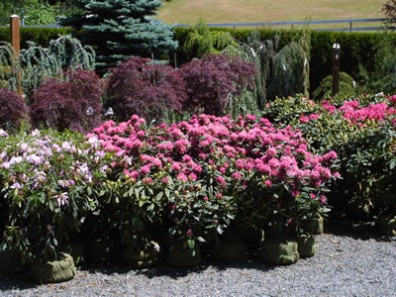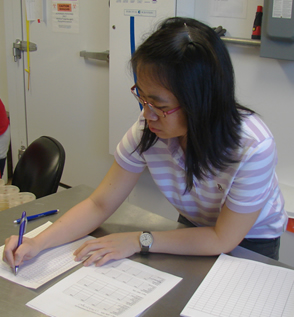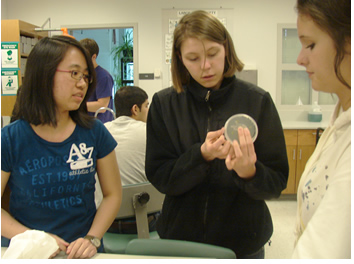Presentations for First Detector Training
gary.maguirePresentations and Workshops
Presentations and workshops are available on a variety of topics related to Sudden Oak Death. Presentations can be downloaded for viewing or contact Marianne Elliott (melliott2@wsu.edu) to arrange a presentation or workshop for your group.
Presentations
SOD Symptom ID and Nursery ManagementA presentation for nursery professionals on recognizing symptoms of P. ramorum on nursery crops and best management practices to minimize the impact of P. ramorum on a nursery. |
 |
Life Cycle of P. ramorum as it Relates to Soil and WaterLearn how P. ramorum survives and spreads in soil and water environments. Best management practices for nurseries are also discussed. |
 |
Sudden Oak Death and Other Phytophthora Diseases of RhododendronRhododendron is the most important host of P. ramorum in Washington nurseries. Learn how to recognize symptoms of P. ramorum and other Phytophthora diseases of Rhododendron. Some results of a study screening a large number of Rhododendron species and cultivars are also presented. |
 |
Sudden Oak Death, Madrone Canker, and Systemic Acquired ResistanceA not so random grouping of subjects that will interest tree care professionals and others. |
 |
“What’s killing my tree?”A presentation from the Master Gardener Advanced Education Conference, Sept 22-24 2011, Ocean Shores, WA. Includes information about tree diseases with special sections on SOD and madrone blight. PDF, ~10 MB. |
Workshops
First Detector Workshops
Sudden Oak Death First Detector workshops are available for interested groups and industry professionals. The purpose of these workshops is to train participants as first detectors, in the event that P. ramorum is introduced to Washington’s landscape. Master Gardener volunteers and horticultural and natural resource professionals are encouraged to attend a training session.
Managing Phytophthora diseases in the nurseryPhytophthora diseases are very costly to nurseries, and a positive P. ramorum find can have huge economic consequences. At this hands-on workshop methods for reducing damage by Phytophthora diseases in the nursery will be demonstrated. |
 |
For information, please contact:
Marianne Elliott
Puyallup Research and Extension Center
2606 W. Pioneer
Puyallup, WA 98371-4998
253-445-4596
melliott2@wsu.edu






